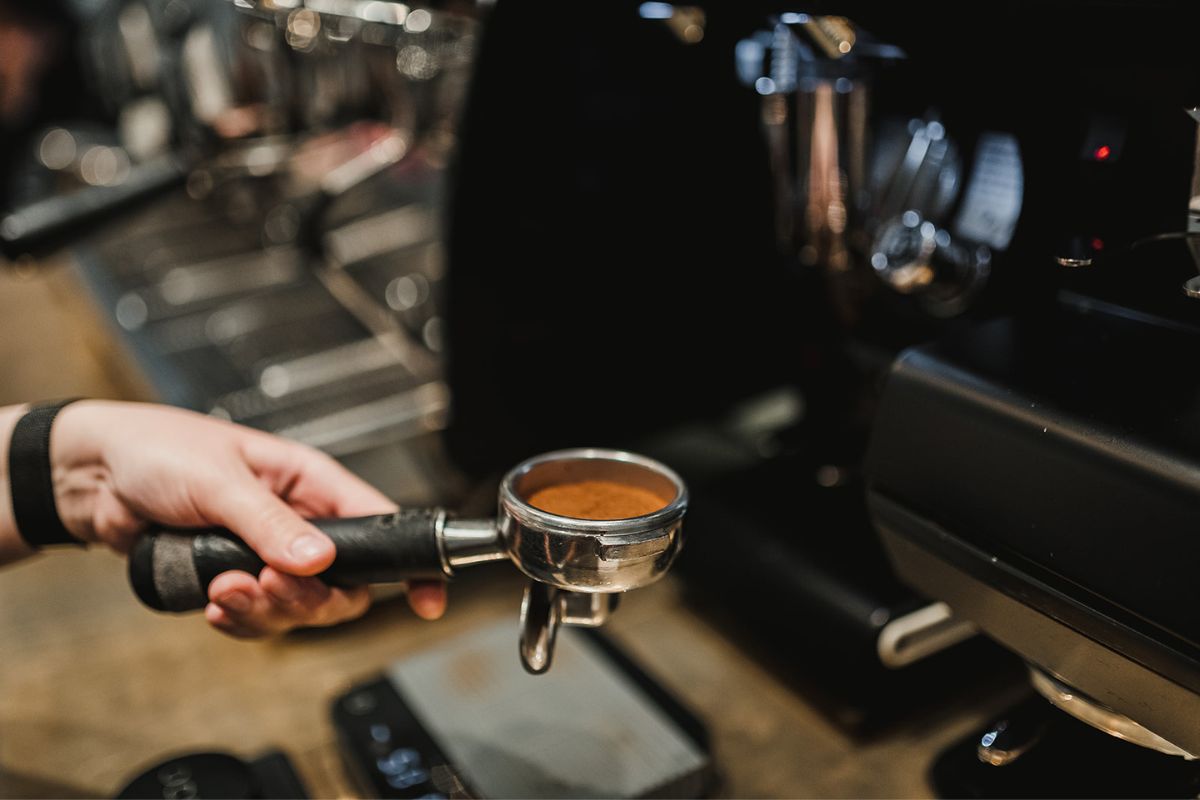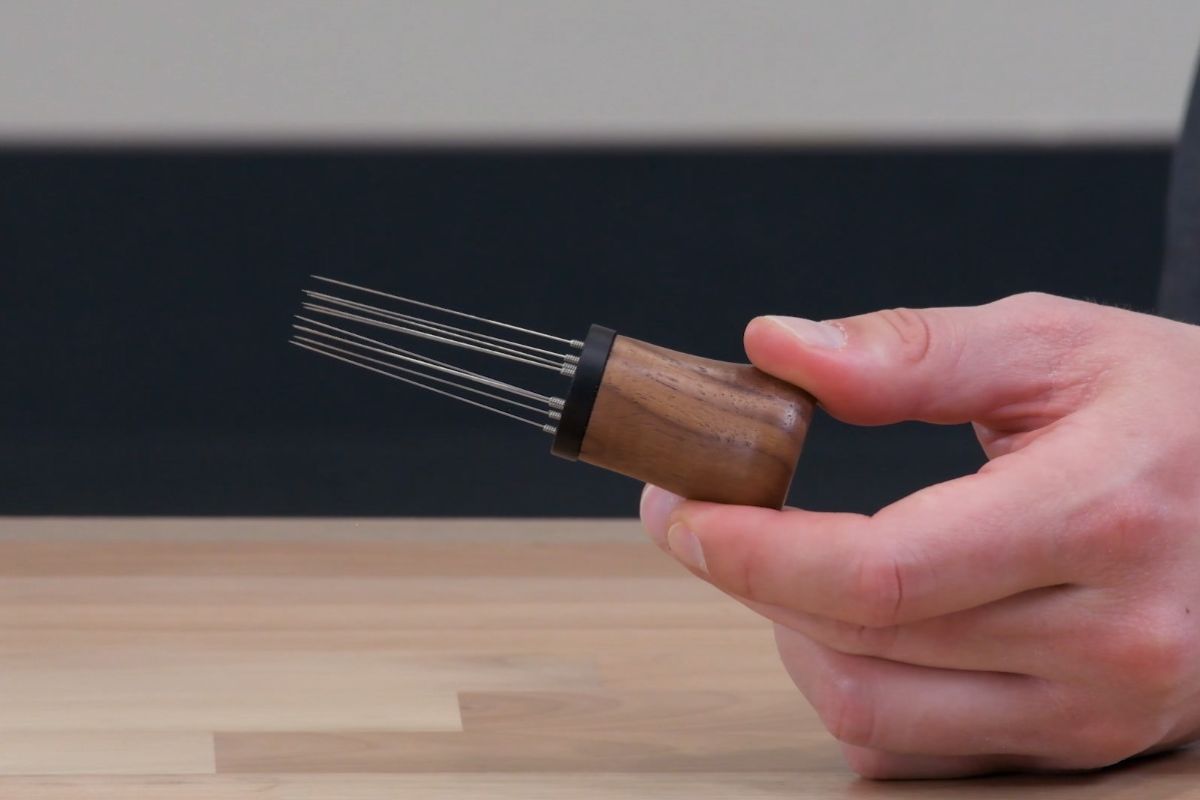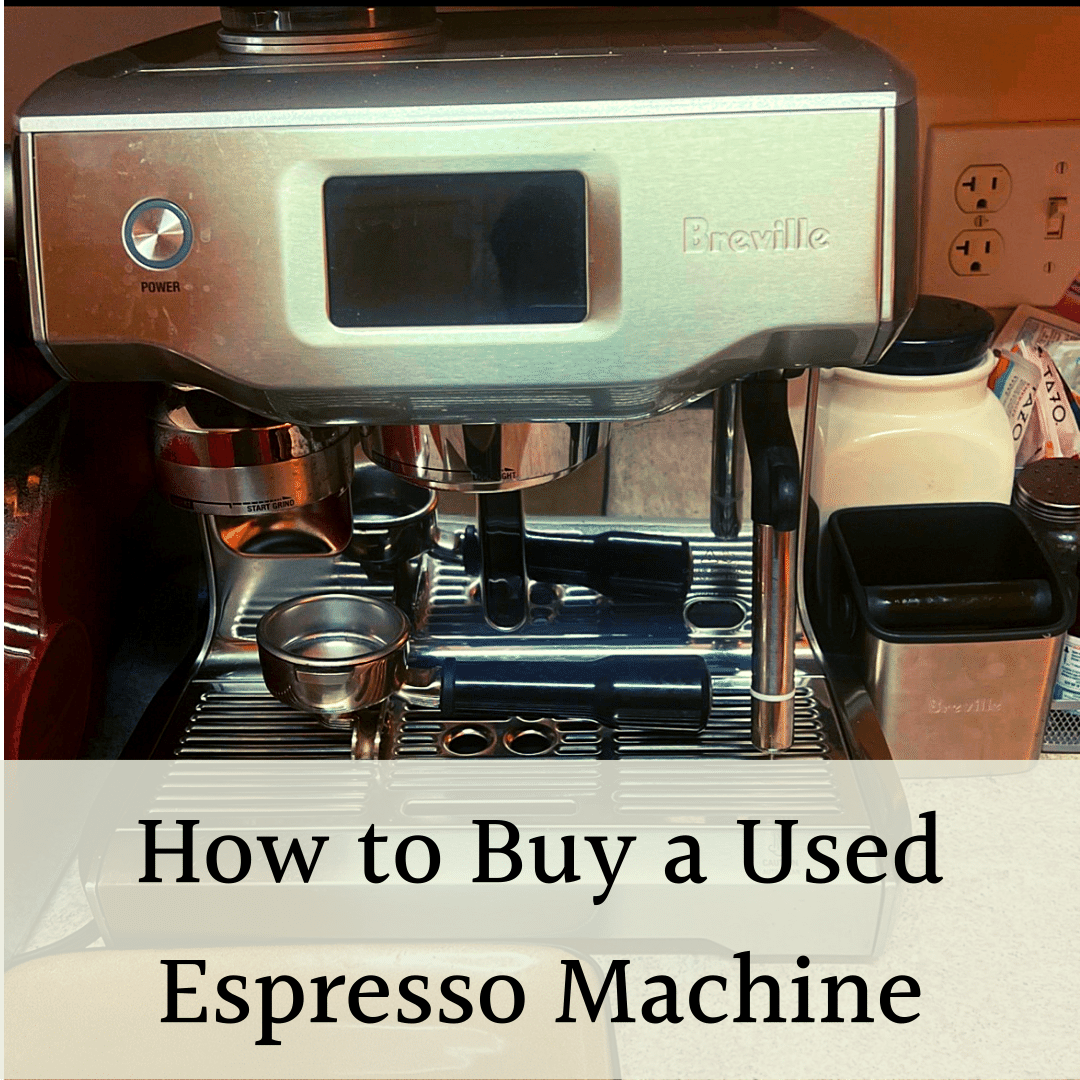
Espresso channeling is a common problem that plagues espresso amateurs and seasoned baristas alike (and I have plenty of coffee-stained shirts to prove it). What causes channeling, and how can you overcome this messy annoyance?
Most channeling is caused by an inconsistent coffee puck, whether an unlevel coffee bed, poor distribution, or coffee clumps. If you see channeling, it’s a sign to work on your preparation technique! You can eliminate channeling with the right technique and a few tools.
In this article, I’ll explain what espresso channeling is, what causes it, and how to fix it so that you can brew consistently clean, sweet espresso.
What is Espresso Channeling
Espresso channeling is when water flows unevenly through a coffee puck, leading to uneven extraction of espresso flavors. This results in espresso shots that taste bitter, sour, or muddy.
Remember, espresso machines use high pressure to extract coffee. That pressurized water wants to (and will) take the path of least resistance through the coffee bed and into your cup. Espresso brewing magnifies any inconsistencies in your preparation.
When espresso channeling happens, it’s because there are inconsistencies in the coffee grounds or coffee bed that make it easier for water to flow through one part of the puck than another. Water won’t distribute evenly over the bed and will instead flow through these “channels” (thus the term “channeling”), over-extracting coffee in those channels and under-extracting coffee outside of them.
Meanwhile, proper coffee puck prep leaves coffee grounds evenly distributed in the portafilter basket, so it takes the same amount of pressure for water to force its way through all parts of the coffee bed. This means there is no path of least resistance, and the water will naturally spread across the whole coffee bed, creating even extraction.
Diagnosing Espresso Channeling
The easiest way to find out if your espresso shots suffer from espresso channeling is by looking at the shots as they extract. This is best done with a bottomless portafilter.
One of the clearest signs of espresso channeling is jets of water and espresso squirting in random directions away from the central column of espresso during brewing. These jets are caused by the water tunneling through channels in the coffee bed instead of being forced into the central stream by an evenly distributed espresso puck.
If you see this pour, you have some issues:
Another sign of channeling is when espresso fails to coalesce into a single, central stream at all. Multiple espresso streams pouring through the portafilter simultaneously mean water is flowing through multiple channels rather than being forced through the puck evenly.
A single, central stream means water is flowing through the entire bed before being connected together under the portafilter.
If you don’t have a bottomless portafilter that lets you see the espresso as it brewing, you can also diagnose espresso channeling based on its taste.
If your espresso shot tastes noticeably sour or bitter, or if the flavors are sharp and unbalanced, channeling is a likely culprit. As always, you need to take care of the basics, like using fresh coffee beans and a clean machine. But if your espresso still tastes sour, bitter, or inconsistent, you have channeling issues.
Causes of Espresso Channeling
Most espresso channeling is caused by poor puck prep. The most common puck prep mistake is incorrect tamping. A good tamp ensures the coffee grounds are compacted to create a flat, even coffee puck that lets water spread across the entire surface.

The biggest tamping mistake is tamping at an uneven angle, which tilts the coffee bed. This allows water to pool on one side of the portafilter basket, over-extracting the ground coffee on that side of the bed while under-extracting the ground coffee in other sections.
Improperly distributing coffee grounds will result in the same problems as uneven tamping. Letting coffee pile up in one section of the filter basket creates high-density and low-density areas of coffee grounds. Water will pool in low-density areas while under-extracting the high-density areas.
Always make sure to level out your portafilter before tamping, and using your hand or some side tamps will help tremendously.
Clumping is another common cause of espresso channeling. Finely ground coffee often clumps when exiting the grinder, which creates pockets of air in a coffee puck after it’s tamped. These air pockets create areas of low resistance that water has an easier time traveling through, which allows channels to be formed that lead to uneven extraction.

Uneven grind size distribution will also cause espresso channeling. You always want a fine grind size for espresso to build pressure, but if your grinder produces inconsistencies in grind size, that will produce inconsistencies in water flow through your coffee puck. Water will run more quickly through the coarse coffee grounds, creating channels that prevent even extraction of the more finely-ground coffee.
How to Prevent Espresso Channeling
Proper Tamping Technique
Poor tamping is the biggest culprit for channeling. Learning to use the proper tamping technique will go a long way toward solving most of your channeling problems. A bottomless portafilter makes it easier to hold the portafilter flat while tamping for an even coffee bed.

If your fingers are long enough, you can use them to press down on the tamp at the four corners of the portafilter (This is what I do). This way, you can feel if the tamp is tilted and adjust accordingly. Otherwise, the “doorknob technique” of holding the tamp like a doorknob will accomplish the same purpose.
You can also buy a tamper with a second ring that holds to the sides of the portafilter. This way, the tamper is always parallel to the coffee bed for an even tamp every time. These self-leveling tampers make your life much easier, and my favorite is the Ikape for 54mm for Breville or the Pusse for 58mm.
WDT
A WDT (Weiss Distribution Technique) tool eliminates clumping in the coffee grounds that causes channeling. You can either purchase or make a DIY tool yourself at home. In either case, a WDT tool breaks apart the clumps of coffee that cause channeling.
Even the best grinders using fresh coffee beans still create occasional clumping, so a WDT tool is a must-have puck prep tool, in my opinion. They are also inexpensive, and almost any option with thin needles will work.
We have a full guide on WDT tools.

Distribution Tool
A distribution tool is a flat, metal cylinder that fits inside a portafilter and ensures that coffee is evenly distributed throughout the basket. Once the tool is settled on top of the portafilter, you spin it to redistribute mounds of coffee grounds to areas of the bed where coffee hasn’t piled up.
Many distribution tools also double as palm tampers and kill two birds with one stone by solving the distribution and tamping problems that lead to coffee channeling.
Puck Screen
A puck screen is a flat, fine mesh made of metal designed to sit on top of the coffee puck during espresso extraction. This screen helps distribute water over the entire coffee bed evenly, leading to better extraction.

While a puck screen can help compensate for minor issues of coffee distribution or uneven tamping, it’s not a substitute for a good grinder and proper technique. It’s more of an aid to even extraction than a problem-solving tool for channeling.
Better Grinder
All the puck prep tools and the best tamping technique in the world won’t prevent channeling if you have a bad grinder. Finely ground coffee is essential for brewing a good espresso shot, and if your grinder is griding unevenly, you won’t be able to extract the coffee’s flavor evenly.
The saying that “your grinder is more important than the machine” is true, and you should consider upgrading your espresso grinder if you’re consistently having issues despite all other fixes. It’s probably the grinder’s fault before the espresso machine.
Adjusting the Grind Size
Finally, a cliche: grind finer. Finely ground coffee has a narrower grind size distribution than more coarse coffee. If you trust the quality of your grinder, you may have channeling because your coffee is ground too coarse and has more variability in grind size.
A finer grind narrows the inconsistencies in grind size and prevents water from running through the coffee too quickly. This reduces channeling and improves espresso extraction.
The Right Equipment for the Job
A good grinder is as important to brewing a delicious espresso shot as a good espresso machine. Check out our guide on the best grinders for espresso to help you find the perfect grinder for your espresso needs.




